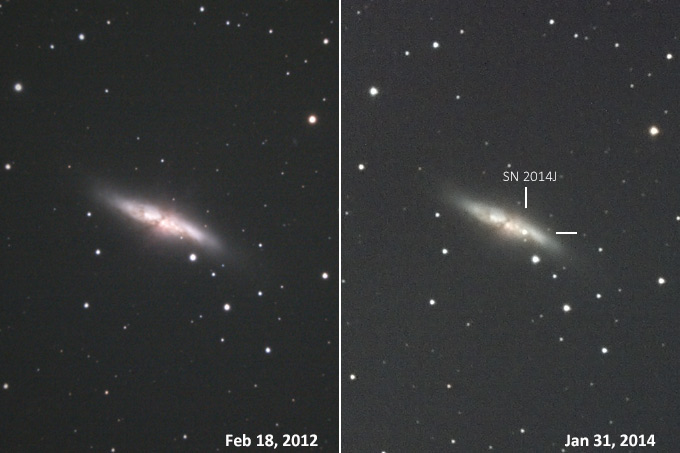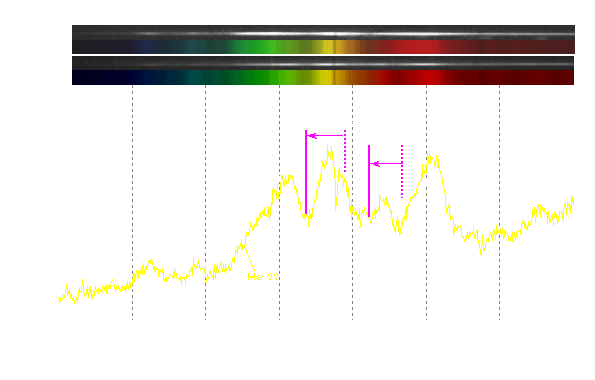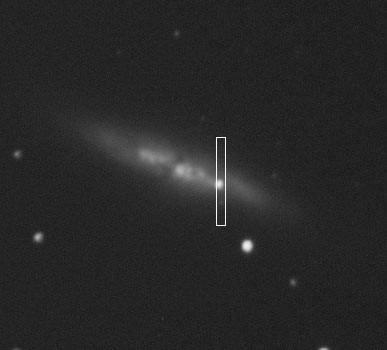
 |
| Date & Time: | Feb 18 2012, from 25:52 to 26:22 JST(+0900) | Jan 31 2014, from 27:15 to 27:31 JST(+0900) |
| Composed 6 images with 6min. exposed | Composed 6 images with 3min. exposed | |
| Optical: | Meade 25cm(10") Schmidt-Cassegrain with reducer (f=1600mm, F6.3) | VIXEN 20cm(7.9") VISAC with reducer (f=1278mm, F6.4) |
| Auto-guided with Meade LX200 Equatorial & Pictor 201XT | Auto-guided with TAKAHASHI EM-200 Equatorial | |
| Camera: | Canon EOS 550D (Remodeled) (ISO3200) | Canon EOS 600D (Remodeled) (ISO3200) |
| Location: | Ooizumi, Hokuto city, Yamanashi pref. | Hiraiso, Hitachi-naka city, Ibaraki pref. |

|
 SN2014J on Feb 22 & slit position (north in up) | |||||||||||||
Upper strip: taken spectrogram, Lower strip: stretched 4-pixel-width & pseudo-colored image |
We can estimate the radial closing (=expanding) velocity of the supernova explosion from the observed two wavelengths of ionized silicon (Si II) at 6355Å and neutral silicon (Si I) at 5948Å. A table in right has listed and indicated the estimated expanding velocities calculated from blue shifts of these two wavelengths of absorption lines in their local minima observed on Feb 22. The active galaxy of M82 has conspicuous emission lines of hydrogen atoms in its nucleus, the recession velocity of the galaxy due to the cosmic expansion can be estimated from the red shifts of the lines (estimated results). The value has about 400km/s, the expanding velocity of the SN2014J including the correction, can be calculated as about 10,000 to 12,000km/s. Two profiles on Feb 22 and Mar 22 have a difference in the Doppler distributions of the ionized silicon atoms at 6355Å. In the profile on Mar 22, the absorption at 6140Å looks weaker than that on Feb 22, while the absorption around 6355Å, original wavelength without the Doppler shift, can be observed. It seems that the absorption of Si II has divided in two parts. It's considered that the inner matter with lower expanding velocity has become observable due to the dilution of the supernova. A lower figure shows the brightness change of SN2014J estimated from the optical images. The supernova had the maximum brightness with 10.2nd magnitude on Feb 2, and is getting dimmer gradually, down about 2nd magnitude on Mar 22.  Brightness change of SN2014J ⇒ Back to M81 & M82 |
M64(Black-eye Galaxy) |
M94 |
| Copyright(c) 2014 by Naoyuki Kurita, All rights reserved. | |||
| To top page | To Deepsky in Spring index | Ursa Major |